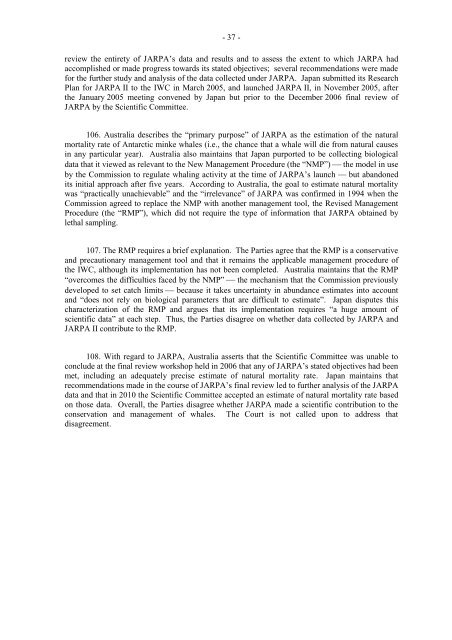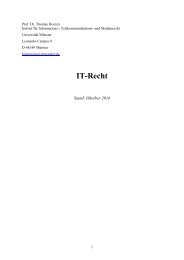3d4yVkKMl
3d4yVkKMl
3d4yVkKMl
Create successful ePaper yourself
Turn your PDF publications into a flip-book with our unique Google optimized e-Paper software.
- 37 -<br />
review the entirety of JARPA’s data and results and to assess the extent to which JARPA had<br />
accomplished or made progress towards its stated objectives; several recommendations were made<br />
for the further study and analysis of the data collected under JARPA. Japan submitted its Research<br />
Plan for JARPA II to the IWC in March 2005, and launched JARPA II, in November 2005, after<br />
the January 2005 meeting convened by Japan but prior to the December 2006 final review of<br />
JARPA by the Scientific Committee.<br />
106. Australia describes the “primary purpose” of JARPA as the estimation of the natural<br />
mortality rate of Antarctic minke whales (i.e., the chance that a whale will die from natural causes<br />
in any particular year). Australia also maintains that Japan purported to be collecting biological<br />
data that it viewed as relevant to the New Management Procedure (the “NMP”) the model in use<br />
by the Commission to regulate whaling activity at the time of JARPA’s launch but abandoned<br />
its initial approach after five years. According to Australia, the goal to estimate natural mortality<br />
was “practically unachievable” and the “irrelevance” of JARPA was confirmed in 1994 when the<br />
Commission agreed to replace the NMP with another management tool, the Revised Management<br />
Procedure (the “RMP”), which did not require the type of information that JARPA obtained by<br />
lethal sampling.<br />
107. The RMP requires a brief explanation. The Parties agree that the RMP is a conservative<br />
and precautionary management tool and that it remains the applicable management procedure of<br />
the IWC, although its implementation has not been completed. Australia maintains that the RMP<br />
“overcomes the difficulties faced by the NMP” the mechanism that the Commission previously<br />
developed to set catch limits because it takes uncertainty in abundance estimates into account<br />
and “does not rely on biological parameters that are difficult to estimate”. Japan disputes this<br />
characterization of the RMP and argues that its implementation requires “a huge amount of<br />
scientific data” at each step. Thus, the Parties disagree on whether data collected by JARPA and<br />
JARPA II contribute to the RMP.<br />
108. With regard to JARPA, Australia asserts that the Scientific Committee was unable to<br />
conclude at the final review workshop held in 2006 that any of JARPA’s stated objectives had been<br />
met, including an adequately precise estimate of natural mortality rate. Japan maintains that<br />
recommendations made in the course of JARPA’s final review led to further analysis of the JARPA<br />
data and that in 2010 the Scientific Committee accepted an estimate of natural mortality rate based<br />
on those data. Overall, the Parties disagree whether JARPA made a scientific contribution to the<br />
conservation and management of whales. The Court is not called upon to address that<br />
disagreement.



